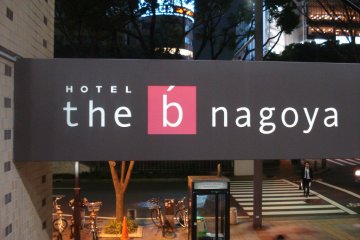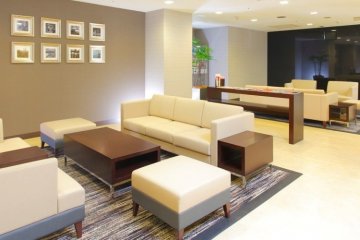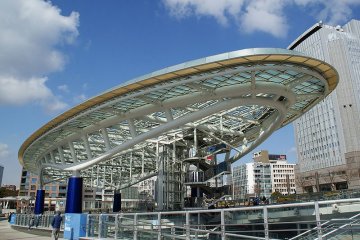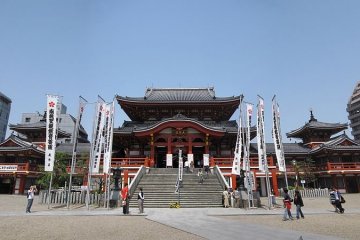
Nagoya's TV Tower
Chris GlennNagoya's TV Tower was built four years before Tokyo Tower, making it Japan’s first and oldest remaining free-standing steel truss television transmission tower.

Any fans of Godzilla should immediately recognize the Nagoya TV Tower. The famous reptile destroyed the tower in the 1964 movie Mothra vs. Godzilla and it was again demolished in the 1992 remake, Godzilla vs. Mothra.
When the TV tower isn’t being wrecked by kaiju monsters it serves as an observation tower with two decks—one at 90-meters high and the other at 100-meters up. There is also a restaurant and an art gallery at the 30-meter mark.
Completed in 1954, Nagoya TV Tower is the oldest of its kind in Japan. It’s also known as the Thunder Tower, thanks to the nighttime illumination program. It’s easily admired from the water dome of nearby Oasis 21. The Tower will reopen on September 19, 2020, with hotel rooms available on the 4th and 5th floors.
Nagoya TV Tower can be accessed from Hisaya Odori Station.

Nagoya's TV Tower was built four years before Tokyo Tower, making it Japan’s first and oldest remaining free-standing steel truss television transmission tower.

Nagoya TV Tower at night provides an impressive view from the top. The Oasis 21, a spaceship shaped building, also glows in the dark to complement the tower and add to the sparkling atmosphere. The surrounding area has a very romantic feel to it and is very popular with couples. You can go to the top of the tower in day and at night, for ¥700 from 10:00 to 22:00 (to 21:00 from January to March). It is a landmark in Sakae that is well worth seeing

the b is undoubtedly one of the finest mid-market hotel brands in Nagoya. If you plan to travel around Aichi Prefecture and pass through Nagoya, then do consider choosing the b nagoya as your place to stay.

I would be happy to stay at the 'hotel b nagoya' again. Just like the best waiters are the ones you don’t notice, the best hotels are ones that don’t annoy.

HOTEL MYSTAYS Nagoya-Sakae is a hotel among busy streets, so you are never far away from the buzz of Nagoya.

Nagoya's best hot dogs and potato fry? Saucisses, one of the city’s best loved fast food outlets, wins hands down!

You haven't tried Nagoya's famed Miso Nikomi Udon until you've been to Yamamotoya!

A pop-up cafe event dedicated to the K-Pop band Seventeen will take place at the Nagoya Box cafe & space, as well as several other locations across Japan. The event will have a variety of eats, drinks, and desserts on offer, plus Seventeen merchandise available for purchase.

Oasis 21, located above Shin-Sakae Station in Nagoya, is a place for shopping and eating. Opened in 2002, this modern facility is across from Nagoya TV Tower. Oasis 21 has a sleek, sci-fi shape and is housed under a glass roof covered with water. Visit restaurants, clothing shops, toy stores, and with easy access to the Sake Underground, Oasis 21 seems to have it all—even a bus terminal. With interesting events scattered throughout the year, Oasis 21 is also called Milky Way Square and houses dance competitions, festivals, and even a skating rink in winter.

The Nagoya City Science Museum is a museum located in Sakae, Nagoya, the center of Nagoya City, in central Japan. The museum houses the largest planetarium in the world and has three main sections on modern technology, life sciences and general science with a variety of hands-on exhibits. [Wikipedia]

The temple Kitanosan Shinpuku-ji Hosho-in in Nagoya, Aichi, is commonly known as Osu Kannon. The temple was originally built in 1333 in Gifu Prefecture, however, due to repeated flooding, it was moved to its present location in 1612 by Tokugawa Ieyasu. Today, the main hall is decorated with a large red paper lantern steadied with wires from its base; worshippers tie their wishes to these wires in hopes that they’ll be granted. An antique fair is also held on the temple grounds on the 18th and 28th of every month. The temple is also famous for its on-ground library with over 15,000 Japanese and Chinese Buddhist works. Among them is the oldest hand-written copy of the Kojiki, the earliest account of Japanese history. While worshippers flock to the grounds daily, you’ll also find flocks of pigeons—it’s a nice place to sit and admire the union of the surrounding city with the tranquility of the temple. Nearby visitors can also enjoy the Osu Shopping Arcade.